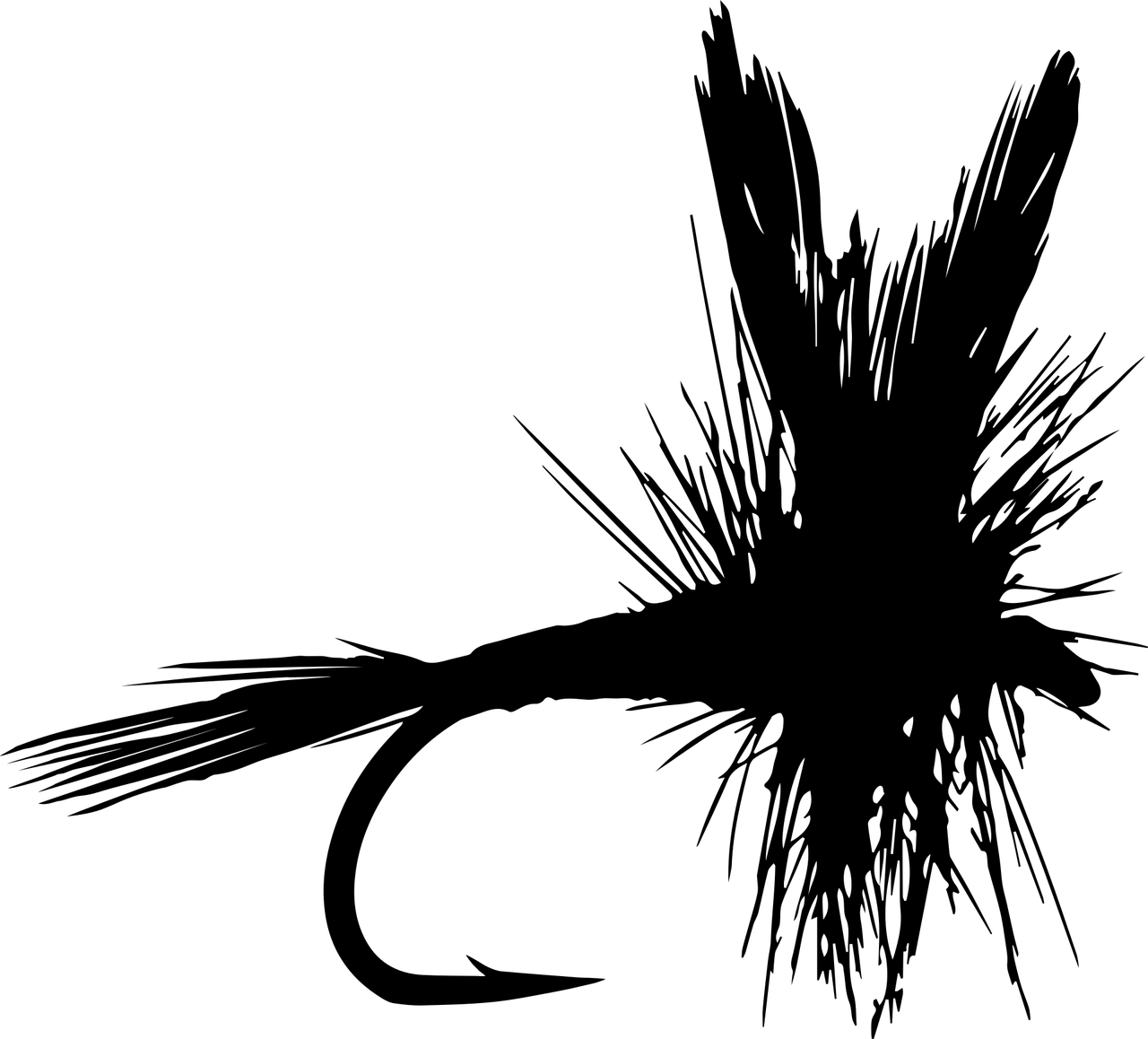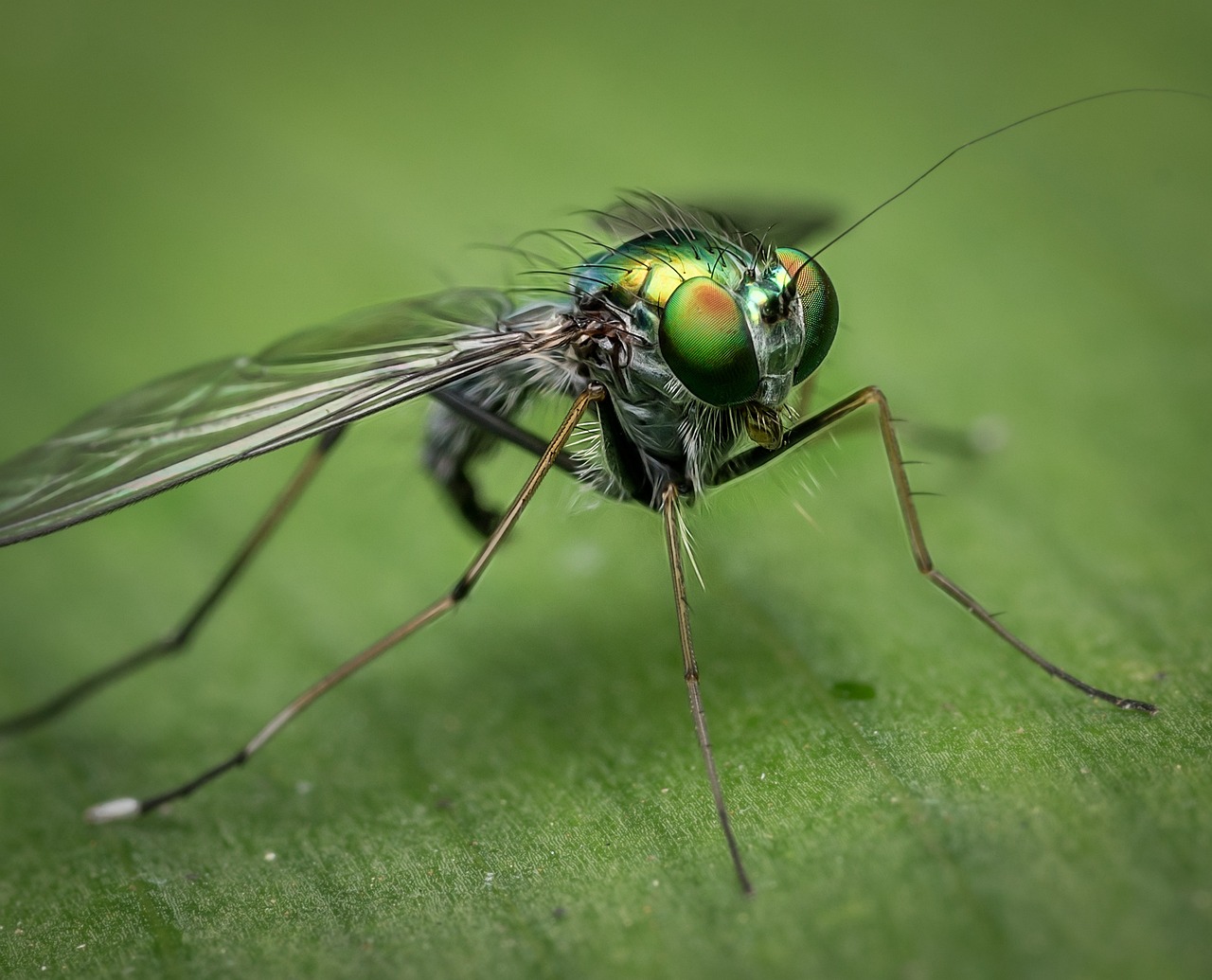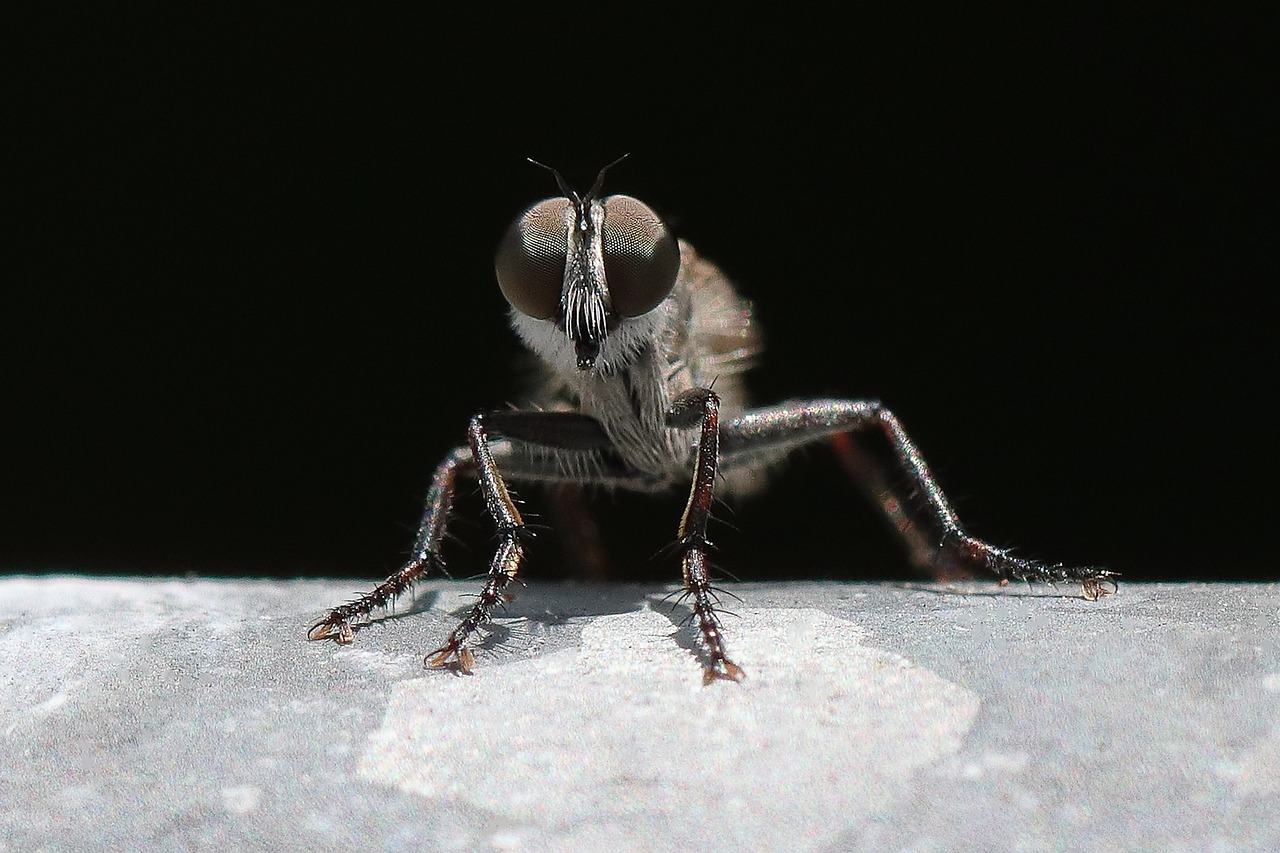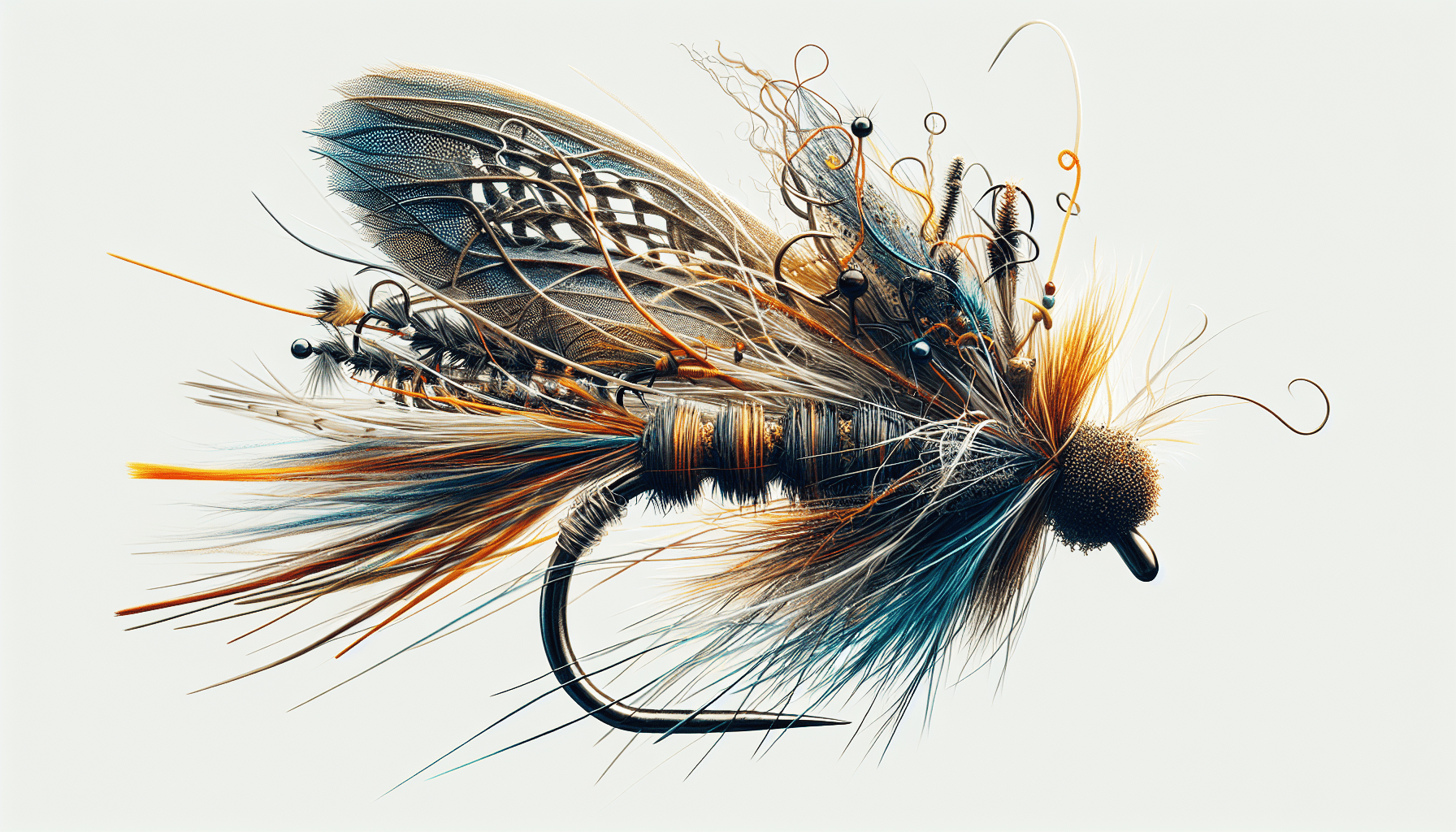Are you a fly fishing enthusiast looking to expand your knowledge and arsenal of techniques? If so, you’ve come to the right place! In this article, we will explore the exciting world of different types of fly fishing flies. From dry flies to nymphs and streamers, each type offers a unique fishing experience. So grab your rod and get ready to discover the art of fly fishing with an array of enticing flies that will surely enhance your fishing adventures.

Dry Flies
Definition and Purpose
Dry flies are a type of fly fishing fly that imitates insects that float on the water’s surface. The purpose of using dry flies is to mimic the natural behavior and appearance of these insects, enticing fish to rise and take the fly. By imitating the insects that are most readily available to the fish, dry flies can be highly effective in fooling fish into biting.
Characteristics
Dry flies are designed to float on the surface of the water, replicating the appearance of insects that have fallen onto the surface film. They are typically made with buoyant materials such as feathers, hair, or foam, which helps them stay afloat. Dry flies are tied in various sizes and shapes to imitate different insects, such as mayflies, caddisflies, and stoneflies. Their design often includes wings, tails, and hackles to accurately mimic the natural appearance of these insects.
Popular Fly Patterns
Some of the most popular dry fly patterns include the Adams, Elk Hair Caddis, Blue Wing Olive, and Royal Wulff. The Adams is a versatile dry fly that imitates a variety of mayflies and is widely used in both rivers and stillwater. The Elk Hair Caddis is a popular choice for imitating caddisflies, as its hair wing and body closely resemble the natural insect. The Blue Wing Olive is effective during hatches of small olive-colored mayflies, while the Royal Wulff is a classic attractor pattern that can mimic a variety of insects.
Techniques for Using Dry Flies
When fishing with dry flies, accuracy and presentation are crucial. You will want to cast your dry fly upstream of where you think the fish may be waiting and allow it to drift naturally downstream. Avoid dragging the fly across the water’s surface, as this will look unnatural to the fish. Sometimes, adding slight movements or twitches to your fly can entice a strike. Pay close attention to any rises or disturbances on the water, as they may indicate where fish are actively feeding.
Wet Flies
Definition and Purpose
Wet flies are designed to be fished below the water’s surface and are intended to imitate insects that are either emerging or drowned. They can be effective in situations where fish are not actively feeding on the surface or during times when insects are hatching and moving in the water column. Wet flies are often used to target trout, but they can also be successful for other species such as bass, steelhead, and salmon.
Characteristics
Unlike dry flies, wet flies do not float on the water’s surface. Instead, they sink or suspend below the surface film. They are typically tied with materials that have more weight, such as feathers, furs, or synthetic materials, to help them sink. Wet flies come in various sizes, shapes, and colors to imitate different insect species, including emerging insects and drowned insects. Some wet flies have additional features like bead heads or soft hackles to add lifelike movement and attract fish.
Popular Fly Patterns
Popular wet fly patterns include the Woolly Bugger, Pheasant Tail, Hare’s Ear, and Soft Hackle fly. The Woolly Bugger is a versatile pattern that can imitate a variety of underwater prey, such as baitfish or leeches. The Pheasant Tail and Hare’s Ear are classic patterns that imitate nymphs and emergers, and they can be highly effective during insect hatches. Soft Hackle flies, which have a collar of soft feathers or fibers, can imitate emerging insects and often produce subtle yet effective movements underwater.
Techniques for Fishing with Wet Flies
When fishing with wet flies, you can use various techniques to entice strikes. One common method is to cast the wet fly across the current and let it swing downstream, simulating the movement of an emerging insect. You can also use a slow, steady retrieve to imitate a swimming or struggling prey. Another technique is to employ a “dead drift,” where you allow the wet fly to drift naturally with the current, just above the stream bed. Varying your retrieve speed and depth can help you determine what the fish are most attracted to on any given day.
Nymphs
Definition and Purpose
Nymphs are fly patterns that imitate the immature stage of aquatic insects, commonly referred to as nymphs or larvae. The purpose of using nymphs is to imitate this underwater life stage of insects that fish actively feed on. Nymph patterns can be highly effective, as nymphs make up a significant portion of a fish’s diet, especially in rivers and streams.
Characteristics
Nymphs are designed to imitate the shape, size, and coloration of different insect nymphs. They are typically tied with materials that sink easily, such as dubbing, feathers, and beads. Nymph patterns often feature segmented bodies, dark colors, and fine details to closely resemble the natural insects. They come in various sizes, from small midge patterns to larger stonefly imitations, to match different aquatic insects commonly found in rivers and streams.
Popular Fly Patterns
Some popular nymph patterns include the Pheasant Tail, Hare’s Ear, Copper John, and Prince Nymph. The Pheasant Tail is a versatile nymph pattern that imitates a variety of insects, including mayflies and caddisflies. The Hare’s Ear is another versatile pattern that can imitate various nymphs, with its subtle coloration and natural-looking materials. The Copper John and Prince Nymph are flashy patterns that often work well in fast-moving waters, attracting fish with their shiny and attractive features.
Techniques for Fishing with Nymphs
When fishing with nymphs, it’s important to get your fly down to the fish’s feeding level, as nymphs generally live near the stream bed. This can be achieved by using weights or sinking line to help your nymph sink quickly. You can employ various techniques, such as dead drifting, where you allow the nymph to move naturally with the current, or adding slight twitches to imitate a nymph’s movement. Another effective technique is indicator fishing, where you use a floating indicator to detect strikes and maintain the appropriate depth.
Streamers
Definition and Purpose
Streamers are large, often flashy, fly patterns that imitate baitfish or other large aquatic prey. The purpose of using streamers is to entice predatory fish, such as trout, bass, pike, or musky, to strike aggressively. Streamer fishing can be an exciting and effective method, often resulting in larger fish and thrilling strikes.
Characteristics
Streamers are usually tied with long, flowing materials such as marabou, feathers, or synthetic fibers to mimic the movement of swimming prey. They come in various sizes, from small minnow imitations to large articulated patterns. Streamers often have vibrant colors or flashy materials to attract the attention of predatory fish. Some streamers also include additional features like weighted heads or eyes to help them sink and swim correctly in the water.
Popular Fly Patterns
Popular streamer patterns include the Woolly Bugger, Clouser Minnow, Articulated Leech, and Sculpzilla. The Woolly Bugger is a versatile pattern that imitates various prey species and can be highly effective in both stillwater and moving water. The Clouser Minnow is a popular choice for targeting saltwater species, as well as freshwater predators like bass and pike. The Articulated Leech and Sculpzilla are large streamers that imitate leeches and sculpin, respectively, and often attract aggressive strikes from large trout or muskies.
Techniques for Fishing with Streamers
When fishing with streamers, it’s important to imitate the natural movement of swimming prey. You can use a variety of techniques, such as stripping, where you retrieve the fly with short, quick pulls to imitate a swimming motion. Another method is to use a “swing” technique, where you cast across or downstream and allow the streamer to swing with the current, mimicking the movement of fleeing prey. Varying your retrieve speed and incorporating pauses can help trigger strikes from predatory fish.

Emergers
Definition and Purpose
Emergers are fly patterns that imitate the stage of an aquatic insect’s life cycle when it is transitioning from the nymph stage to the adult stage. The purpose of using emerger patterns is to imitate this vulnerable stage of insects that fish often key in on. Emerger patterns can be highly effective during insect hatches or when fish are selectively feeding on emerging insects.
Characteristics
Emergers are typically tied to float partially submerged or just below the water’s surface. They often feature materials that create a slim and sleek profile, imitating the body shape of an emerging insect. Some emerger patterns have trailing shuck materials to imitate the exoskeleton that the nymph shed during emergence. They come in various sizes and colors to match different emerging insects commonly found in rivers and lakes.
Popular Fly Patterns
Popular emerger patterns include the RS2, Blue-winged Olive Emerger, Sparkle Dun, and Zebra Midge. The RS2 is a versatile pattern that imitates a variety of emerging insects and can be highly effective during hatches. The Blue-winged Olive Emerger is specifically designed to imitate emerging mayflies and often works well when fish are selectively feeding. The Sparkle Dun is a pattern that imitates both emerging and adult mayflies, with its upright wing and slim body. The Zebra Midge is a simple yet effective pattern for imitating midge emergers, with its minimalistic design and high visibility.
Techniques for Fishing with Emergers
When fishing with emerger patterns, it’s important to observe the behavior of the fish and the insects on the water. Look for rising fish or subtle swirls, indicating that fish are actively feeding on emerging insects. You can present the emerger pattern just below the surface of the water with a dead drift or gentle twitch to imitate the natural movement of the emerging insect. Pay attention to the timing of the hatch and the size and color of the emerging insects to match your fly pattern accordingly.
Terrestrials
Definition and Purpose
Terrestrial flies are patterns that imitate insects and creatures that do not live or emerge from the water but fall or get blown onto the surface. The purpose of using terrestrial flies is to imitate these land-based food sources that fish often encounter during certain seasons. Terrestrial flies can be highly effective, particularly when fish become accustomed to feeding on grasshoppers, ants, beetles, or other land insects.
Characteristics
Terrestrial flies are typically larger and more buoyant than other fly patterns to imitate the size and buoyancy of land-based insects. They often have materials like foam, rubber legs, or synthetic grasshopper bodies to create a realistic profile and provide flotation. Terrestrial patterns come in various sizes, shapes, and colors to match different land insects that fish frequently encounter.
Popular Fly Patterns
Some popular terrestrial patterns include the Chernobyl Ant, Dave’s Hopper, Foam Beetle, and Parachute Ant. The Chernobyl Ant is a large and highly visible pattern that imitates various land insects like stoneflies or grasshoppers and can be effective in attracting aggressive strikes. Dave’s Hopper is a classic hopper pattern that imitates grasshoppers, with its realistic body and rubber legs. Foam Beetles are versatile patterns that imitate beetles and can be effective during summer months. The Parachute Ant is a small and realistic pattern that imitates ants, which can be highly effective when fish are selectively feeding on these insects.
Techniques for Fishing with Terrestrial Flies
When fishing with terrestrial flies, look for areas where land insects are likely to fall onto the water or get blown by the wind, such as grassy banks, overhanging trees, or open fields adjacent to the water. Cast your terrestrial fly near these areas and allow it to drift naturally on the water’s surface. You can also add slight twitches or movements to imitate the struggling movements of a fallen insect. Pay attention to any rises or disturbances on the water, as they may indicate fish actively feeding on terrestrials.

Saltwater Flies
Definition and Purpose
Saltwater flies are specifically designed for fly fishing in saltwater environments and imitate a wide range of prey species that inhabit coastal waters. The purpose of using saltwater flies is to target fish species like bonefish, tarpon, permit, and striped bass, among others, that are known for their aggressive behavior and challenging fight. Saltwater fly fishing can offer thrilling opportunities and unique challenges for anglers.
Characteristics
Saltwater flies are typically tied with durable and corrosion-resistant materials to withstand the harsh conditions of saltwater environments. They often have materials like synthetic fibers, epoxy, or deer hair to create movement and provide flotation. Saltwater patterns come in various sizes, shapes, and colors to match the different baitfish, crabs, shrimp, or other prey species commonly found along coastlines.
Popular Saltwater Fly Patterns
Some popular saltwater fly patterns include the Clouser Minnow, Lefty’s Deceiver, Crazy Charlie, and Gurgler. The Clouser Minnow is a versatile pattern that imitates various baitfish species and is highly effective for species like striped bass or bonefish. Lefty’s Deceiver is a classic saltwater pattern that imitates larger baitfish like mullet or menhaden, and it is particularly popular for tarpon fishing. The Crazy Charlie is a go-to pattern for bonefish, imitating small shrimp or crustaceans. The Gurgler is a surface pattern that imitates shrimp or injured baitfish and can generate explosive strikes from aggressive predators.
Techniques for Saltwater Fly Fishing
Saltwater fly fishing often requires accurate casting, quick presentations, and precise retrieves. When targeting saltwater species, it’s important to observe the behavior of the fish and adjust your technique accordingly. Depending on the species and conditions, you may need to use different retrieve speeds, depths, or stripping techniques to entice strikes. Varying your fly pattern, size, and color can also be effective in matching the specific prey species or conditions you are facing.
Bass Flies
Definition and Purpose
Bass flies are specifically designed for fly fishing for bass, a predatory fish species known for their aggressive strikes and strong fight. The purpose of using bass flies is to target largemouth bass, smallmouth bass, or other bass species in both freshwater and saltwater environments. Bass fly fishing can be highly rewarding, offering thrilling encounters and the opportunity to catch trophy-sized fish.
Characteristics
Bass flies are typically larger and bulkier than other fly patterns to imitate the larger prey items that bass commonly feed on, such as baitfish or crayfish. They often have materials like deer hair, rubber legs, or feathers to create volume and movement. Bass patterns come in various sizes, shapes, and colors to match the different baitfish or crayfish species that bass prefer.
Popular Bass Fly Patterns
Some popular bass fly patterns include the Clouser Minnow, Woolly Bugger, Dahlberg Diver, and Popper. The Clouser Minnow is a versatile pattern that imitates various baitfish species and is highly effective for both largemouth and smallmouth bass. The Woolly Bugger is a go-to pattern for bass fishing, imitating leeches, crayfish, or other large insects. The Dahlberg Diver is a surface pattern that creates a loud pop or splash when retrieved, imitating a wounded baitfish. Poppers are surface patterns with a cupped face that create a noisy “popping” sound when twitched, often triggering aggressive strikes from bass.
Techniques for Fly Fishing for Bass
When fly fishing for bass, targeting structure such as fallen trees, weed beds, or rocky areas can be highly productive. Casting your fly close to these structures and retrieving it with steady or erratic retrieves can imitate the movement of prey and attract aggressive strikes from bass. Varying your retrieve speed, depth, or fly pattern can also be effective in determining what the fish are responding to on any given day. Pay attention to any activity on the water, such as surface disturbances or boils, as they may indicate where bass are actively feeding.

Steelhead Flies
Definition and Purpose
Steelhead flies are specifically designed for fly fishing for steelhead, a highly prized and migratory trout species known for their strength and acrobatic jumps. The purpose of using steelhead flies is to target these anadromous fish that migrate from rivers to the ocean and back again. Steelhead fly fishing offers a unique and challenging experience for anglers, combining the excitement of trout fishing with the power of saltwater species.
Characteristics
Steelhead flies are typically tied with materials that create movement and provide visibility in murky water conditions. They often have materials like marabou, rabbit strips, or synthetic fibers to imitate the movement of baitfish or small aquatic organisms. Steelhead patterns come in various sizes, shapes, and colors to match the different prey species or conditions encountered in both freshwater and saltwater.
Popular Steelhead Fly Patterns
Some popular steelhead fly patterns include the Intruder, Egg Sucking Leech, Spey fly, and Steelhead Muddler. The Intruder is an articulated pattern that imitates larger baitfish or shrimp and offers a lifelike swimming action in the water. The Egg Sucking Leech imitates a leech with a bright, contrasting colored “egg” pattern, which can be effective during the steelhead’s spawning season. Spey flies are traditional flies with long, flowing materials that create an enticing swing or drift in the water. Steelhead Muddlers imitate injured baitfish and create a noisy “wake” when stripped, attracting the attention of steelhead.
Techniques for Fly Fishing for Steelhead
Steelhead fly fishing often involves presentation techniques like swinging or nymphing. Swinging involves casting your fly downstream and allowing it to swing across the current, imitating the movement of swimming prey. Nymphing involves using weighted flies or indicators to present your fly near the stream bed, where steelhead often hold. Varying your retrieve speed, depth, or using different patterns can help determine what the steelhead are more likely to strike. Patience, observation, and persistence are key when pursuing these elusive and powerful fish.
Salmon Flies
Definition and Purpose
Salmon flies are specifically designed for fly fishing for salmon, which are an iconic and highly sought-after species for anglers around the world. The purpose of using salmon flies is to target these anadromous fish as they migrate from the ocean to freshwater rivers to spawn. Salmon fly fishing offers a unique and rewarding experience, with the chance to catch these powerful fish during their epic journeys.
Characteristics
Salmon flies are typically larger and more vibrant than other fly patterns to imitate the size and coloration of the prey species that salmon feed on. They often have materials like feathers, tinsel, or synthetic fibers to create movement and provide visibility. Salmon patterns come in various sizes, shapes, and colors to match the different species of salmon, such as Chinook, Coho, or Atlantic salmon.
Popular Salmon Fly Patterns
Some popular salmon fly patterns include the Green Highlander, Ally’s Shrimp, Thunder and Lightning, and Orange Bomber. The Green Highlander is a classic pattern that imitates a variety of swimming prey and often attracts the attention of aggressive salmon. Ally’s Shrimp is a versatile pattern that imitates shrimp, which can be highly effective during salmon runs. The Thunder and Lightning is a traditional pattern with a contrasting color scheme that can produce strikes even in challenging conditions. The Orange Bomber is a buoyant surface pattern that often elicits aggressive strikes from salmon, particularly when they are actively feeding.
Techniques for Fly Fishing for Salmon
When fly fishing for salmon, understanding the fish’s behavior and timing their migration is crucial. Locating the holding areas or pools where salmon rest can be highly productive. Casting your fly upstream or across the current and allowing it to swing or drift downstream can imitate the movement of swimming prey. Varying your retrieve speed, depth, or using different patterns can help determine what the salmon are more likely to strike. Patience, persistence, and careful observation of water conditions and fish behavior are key when pursuing these majestic and powerful fish.
In conclusion, the world of fly fishing offers a wide variety of fly patterns and techniques to match the preferences of different fish species and the conditions of their habitats. Dry flies, wet flies, nymphs, streamers, emergers, terrestrials, saltwater flies, bass flies, steelhead flies, and salmon flies each have their unique characteristics, purposes, and popular patterns. By understanding the behavior of the fish, the insects or prey they feed on, and employing the appropriate techniques, you can increase your chances of success and enjoy the thrill of fly fishing. Remember to always check local regulations, practice catch-and-release, and respect the environment to ensure a sustainable and enjoyable fishing experience for generations to come.